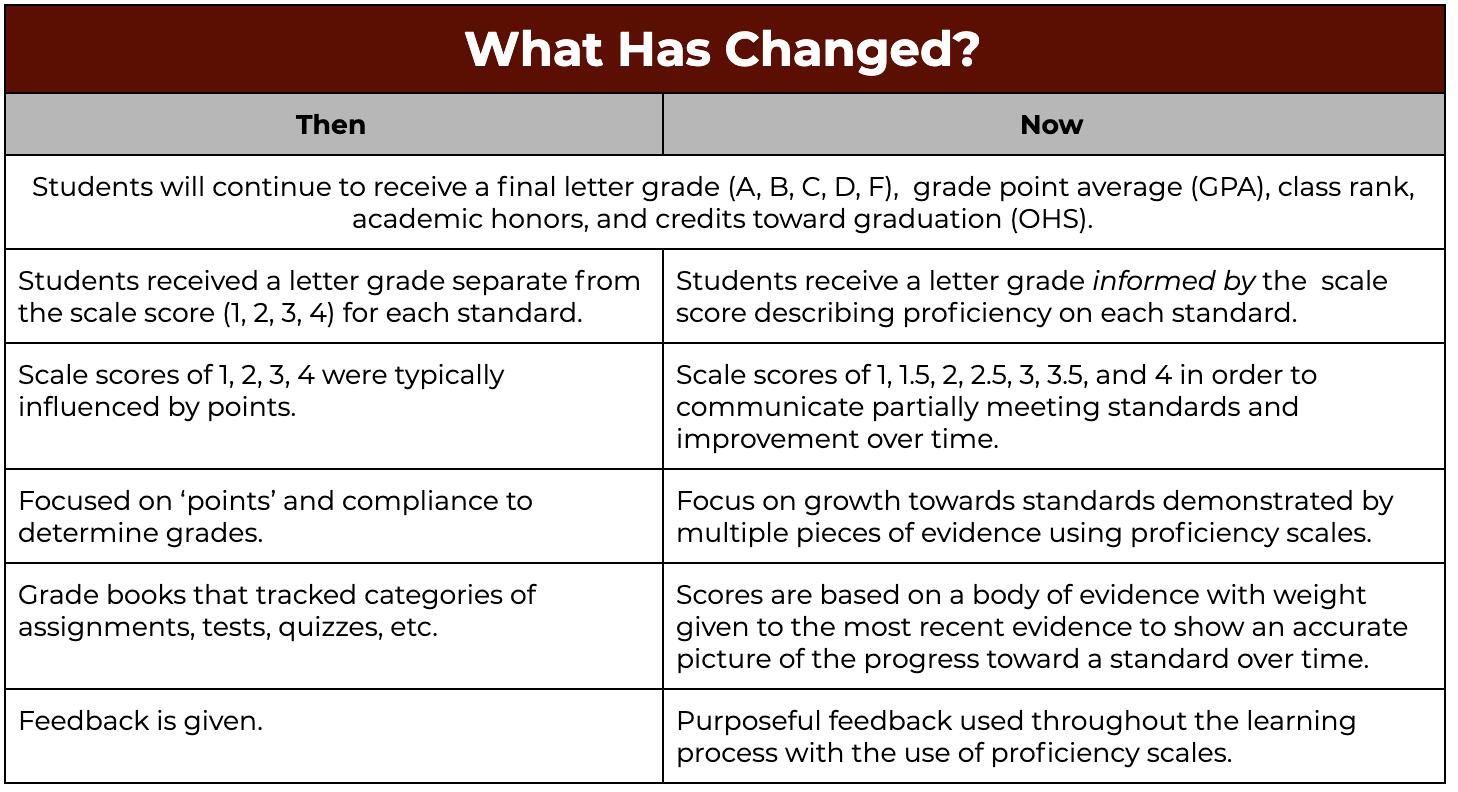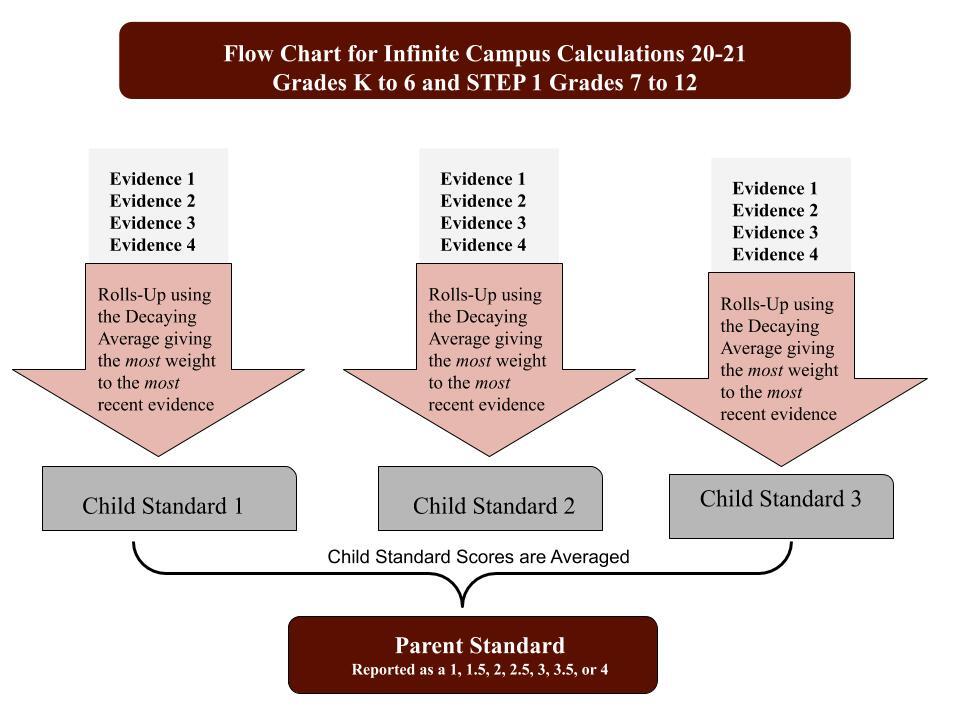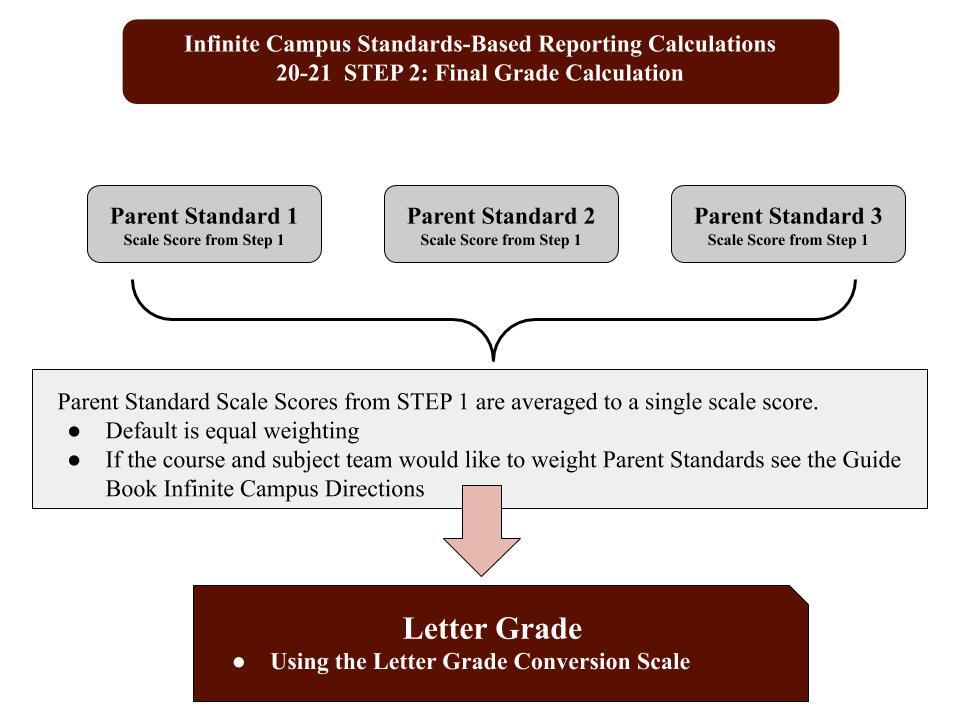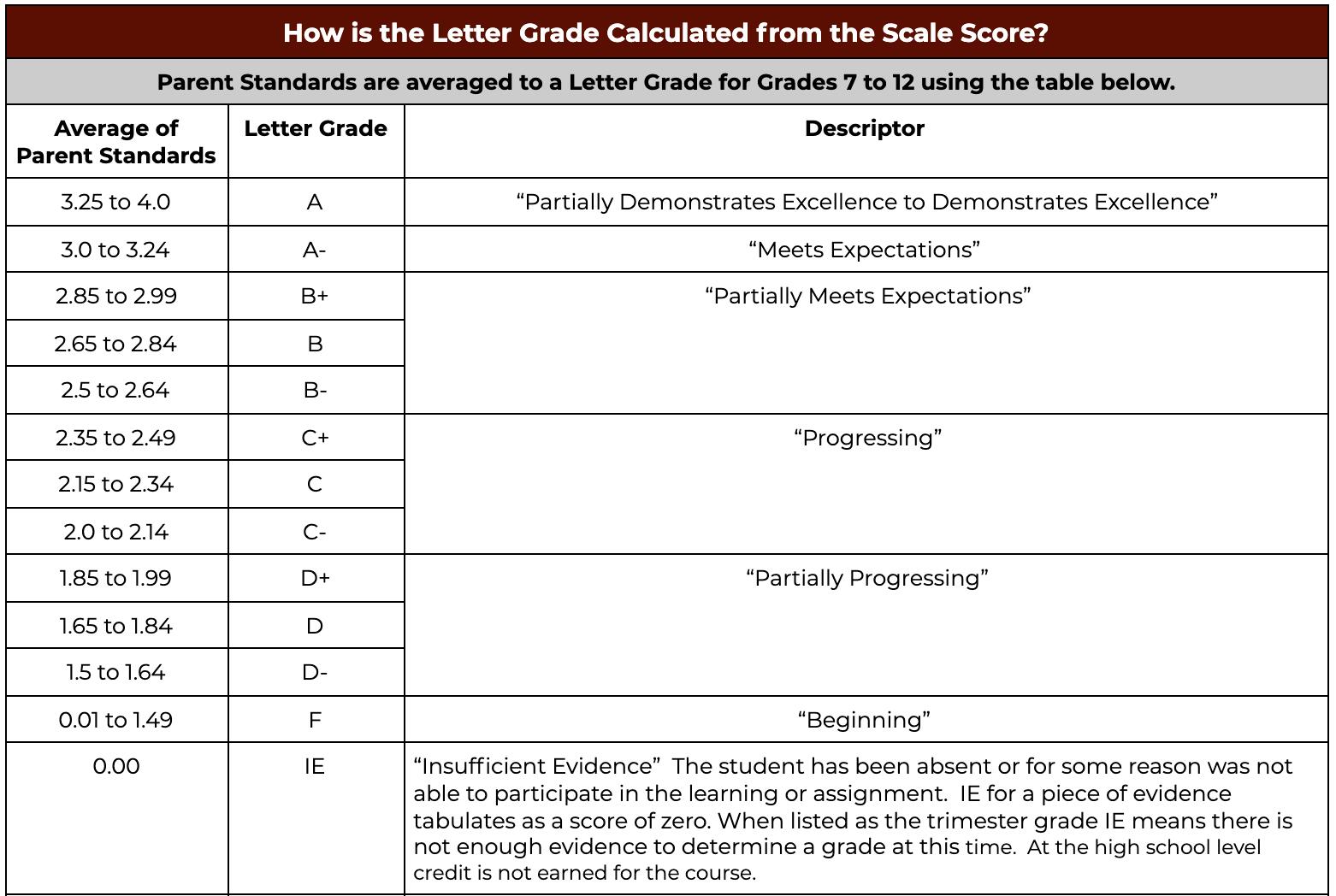Reporting Learning for Students in Grades 7 to 12
Key Points
- Common Standards-Based Learning and Reporting practices
- Transparency about what a student needs to know and be able to do
- Clear communication
- High student expectations
- Students still recieve letter grades, GPA, class rank, and academic honors
Every School--Every Classroom--ALL Our Kids

Example Proficiency Scale
How Are Teachers Are Using Scales with Students?
“We start each math and science class with a 5-minute reflection of our current proficiency scale. During this reflection, we quickly review topics we have covered in class and also highlight topics we have yet to cover. This process seems to be good for all (the students and me). I do not have any hard data to prove anything at this point but I can tell you through classroom discussion from the first day we started this process to today that students seem much more comfortable and confident with the material they are (and will be) assessed on. The theory behind this makes complete sense to me in that students will hit the mark much more often when they can see the clearly defined target/goal.”
I begin each new unit by going over the proficiency scale with my students. We discuss what is expected at each of the different levels. After discussing the proficiency scale, the students take a short pre-assessment which includes foundational skills the students need in order to be successful in that content on that scale. If students show a deficiency in the foundational skills, I will assign them to my WIN groups for the upcoming week so we can work on those certain skills. Throughout the unit, all pieces of evidence include level 2, 3, and 4 skills so kids have an opportunity to show their understanding at all levels every time.
The students seem to be very receptive to this new idea of grading. Surprisingly, I haven't heard any kids ask what percent their score would equal out to be, or how many "points" they missed! I feel like they can actually see the learning process taking place right in front of their eyes, as they can see the progression right there on the scale, and they know exactly what it takes to move from one level to another. Another big plus to using the proficiency scales is that we are now putting multiple pieces of evidence in the gradebook, and it doesn't have to be just a quiz or a test to be used as a piece of evidence. (In years past, the majority of the students' grades were summative tests only.) I'm trying to be more creative in the ways I assess students, remembering that evidence comes in many different forms, sometimes even in the form of a short conversation with the student. This takes some of the test-taking anxiety out of the equation!
How does this work in Infinite Campus?
Parent Standard: The category or theme of a group of standards.
Child Standard: The priority standard taught in the classroom.



How does my student get an A?
- To receive an A- in the course students must ‘meet expectations’ (3.0) in all parent standards (such as literature, writing, speaking & listening in English class)
- To receive an A in the course, students must attempt to demonstrate excellence in all parent standards and have at least some success. In other words, they must be willing to go after level 4.0 questions, projects, or other options that give students the opportunity to show a deep level of understanding and application with at least partial success.





